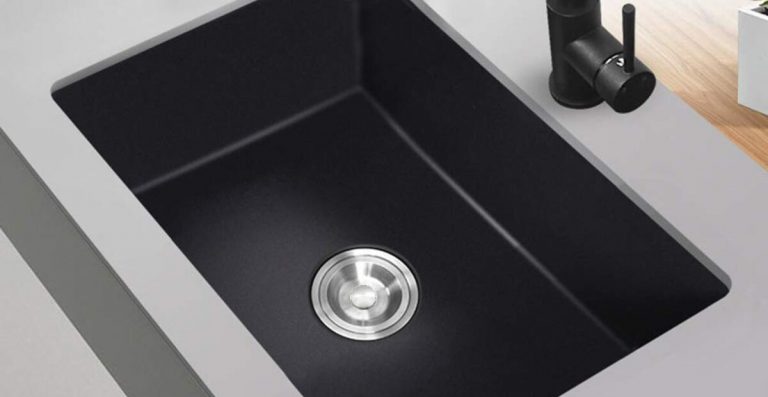The sink plays a big role in everyday life in the kitchen. And sink manufacturers have understood this well, offering a wide choice of models. If it must of course harmonize with the décor of the kitchen, the sink, it must above all be robust to accompany you in the long term. To fit into all kitchens, it is also available in different sizes, shapes and with three types of installation. Finally, from stainless steel to glass through resin, copper, granite, and finally ceramics, it can be designed in various materials that will inevitably impact its strength, ease of maintenance, or price.
The Size
The size of the sink is one of the first criteria to take into account, because it must adapt to the available space around the Cambria countertop but also to the family configuration. Thus, a sink with a tray and a drainer is enough for a couple equipped with a dishwasher. For perfect efficiency, combine it with a high-rise kitchen faucet.
For an intermediate solution, the sink, a tray, and a half with a drainer are practical for washing dishes thanks to its half tank extra. The ‘large tray’ version with drainer provides a large storage capacity ideal for a family that has a dishwasher. Finally, the sink with two large bins and a drainer is recommended for tribes. If space allows, it is the comfortable solution par excellence for washing dishes, especially if it is combined with a mixer with a retractable shower.
The Options
The sink to be installed will come to rest on a piece of furniture under the sink, which is designed to accommodate it. Easy to install, it nevertheless requires that the sink and the under-sink cabinet are compatible because the edge of the tanks rests on the furniture. Hence a more limited choice of models as well as maintenance that must be more regular, the edges and joints remaining apparent.
The built-in sink fits into a worktop that has been cut for this purpose. Its main asset is to be able to settle wherever you want, which optimizes the space and without the need for specific furniture. It also requires simplified maintenance, but on the other hand, its installation is more complex.
For a kitchen that focuses on design, you can also integrate your sink. Unlike a built-in sink, the so-called under-plan sink is fixed under the worktop. It is very aesthetic because the worktop remains totally smooth with simplified maintenance. It nevertheless requires cutting the worktop with precision.
The Material Choice
Material is very important, you have chosen it for decks, fabrics and now time for your sink. Which material should I choose for my sink? Most manufacturers offer sinks in six different materials, for real diversity. If you prefer design and hygiene, the choice of stainless steel, a material used in professional kitchens, is essential. It fits perfectly into any décor, patinates over time, and resists dirt very well. It’s up to you to choose between a satin stainless steel sink bursting with shine and which withstands high temperatures very well or a honeycomb sink which has the particularity of not scratching and being even more effective against traces of limestone. The top in the field? The microstructured stainless steel sink which, thanks to micro reliefs, combines the advantages of the other two, namely the brilliance of satin stainless steel, and the resistance and simplicity of maintenance of honeycomb stainless steel.
For a semi-professional kitchen and a refined aesthetic, the sink can also be made of copper. This material withstands shocks such as heat, solvents, and moisture. It is durable and sustainable as well. Color lovers can opt for a synthetic resin sink that offers a large choice of colors, allowing, for example, to harmonize its sink and its worktop, all for an economical price. Based on synthetic materials, the resin is resistant to thermal shocks, scratches but also stains. It is easy to maintain.
Conclusion
To cook your best, remember to install your sink at an equal distance from the cooking area and the cold zone. If it is placed under a window, so as not to block it, opt for a suitable faucet. If the sink is against a wall, do not forget about the lighting. Finally, if your water supply allows it, it may be interesting to position it on an island. Learn more about what to look for when buying a sink. This is the ultimate sink buyers guide.

